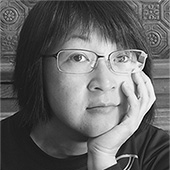Since the first User Friendly in 2004, the conference has matured into one of the best UX conferences in Asia. Each year, the range of topics and workshops
broadens, and there is more content from China and other Asian countries, showing
that the local community is gaining in confidence, expertise, and leadership.
User Friendly provides a wonderful way to connect with the UX community in China and a perfect first-hand experience to let you better understand what is happening with user experience in China today.
What key themes and observations emerged from User Friendly 2009?
A founding organizer of User Friendly and Vice President of UPA, Daniel Szuc asked five local and international colleagues about their thoughts on User Friendly and other topics:
- Whitney Quesenbery—Past President of UPA and long-time attendee and supporter of User Friendly, attending her fourth User Friendly conference
- Jhumkee Iyengar—first-time attendee of User Friendly
- Marc Rettig—first-time attendee of User Friendly
- Matthew Oliphant—first-time attendee of User Friendly
- Yuanfu Qiu—President of UPA Singapore and first-time attendee of User Friendly
A shift in thinking in China—Marc spoke about the shift from “made in China” to “created in China.” China is a strong, established manufacturing culture, in which many manufacturing businesses have become very successful within a short period of time. With that culture, there is a risk that China might repeat, in a compressed timeframe, what has happened in the West in the Industrial Age with a rush to consumerism, designing to satisfy a consumer cycle, and getting people to want and replace things over and over again. This is not a sustainable model and does not correlate to a long, happy life for people.
China’s design opportunity—Marc also talked about design in China making a fresh start, avoiding a repetition of what has occurred in the West, and leading a potential shift to new directions. China has an opportunity to rethink and create conditions for a way of life that is both sustainable and good for people.
UX Maturity—Whitney observed that there is an increased level of maturity in the local UX community, with people asking more sophisticated questions and making invited international speakers, like herself, feel more like co-leaders and peers.
Increased UX awareness—Yuanfu told us that Asian businesses are starting to pay more attention to user experience and are curious to know more about it, which is a positive sign. However, while business leaders may have heard about user experience, they need help in really understanding its potential benefits and introducing User Experience in their companies. The challenge is that they may not know what user experience means, because they are not trained in this area. So how can we provide that educational foundation Asia needs?
Permission to lead—Whitney spoke about nurturing a local or broader Asian community of practice by running 1–2 day intensive workshops—for example, to write local UX guidelines—and getting local thought leaders and experts together to share information. Whitney asked whether the development process in China is different from an international perspective. How can China lead UX efforts without having to wait for permission or leadership from elsewhere in the world?
Open and friendly—User Friendly 2009 was good for English-speaking visitors, too. As a first-time visitor, Matthew was pleased that participants spoke English, helping him and enabling great conversations. Jhumkee was impressed by both the turnout and the momentum of user experience in China. She observed that local UX professionals who attended the conference were young, eager to learn, and enthusiastic and felt that the China UX community is sure to move ahead quickly. Marc observed that the atmosphere at the conference dinner was playful, with people not taking themselves too seriously. He thought attending User Friendly 2009 was in itself an act of leadership. It’s people saying, I want to grow as a professional, expand my craft, change my self-perception, and plug into the UX community.
Design meets usability, and usability meets design—Jhumkee spoke about how UX professionals are coming out of design schools in India and that there is a real push from the Indian Government to support design thinking. She thinks we need to embrace design in Asia. She also mentioned that there is a nice overlap between design and usability, with a need for both.
Design value and maturity—Matthew observed that, because there is a young, knowledge-hungry, upcoming community of new designers in China, it’s vital to teach a good design process and how UX professionals can communicate the value of design to the stakeholders they work with.

